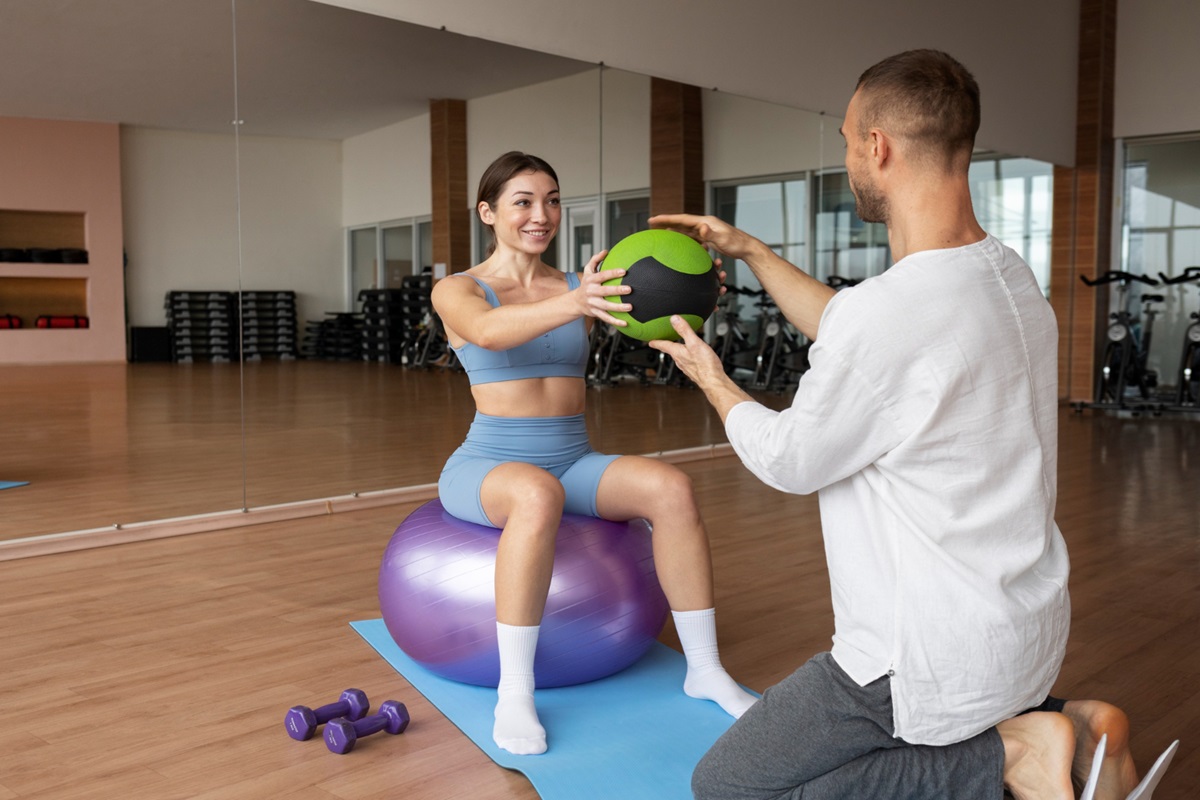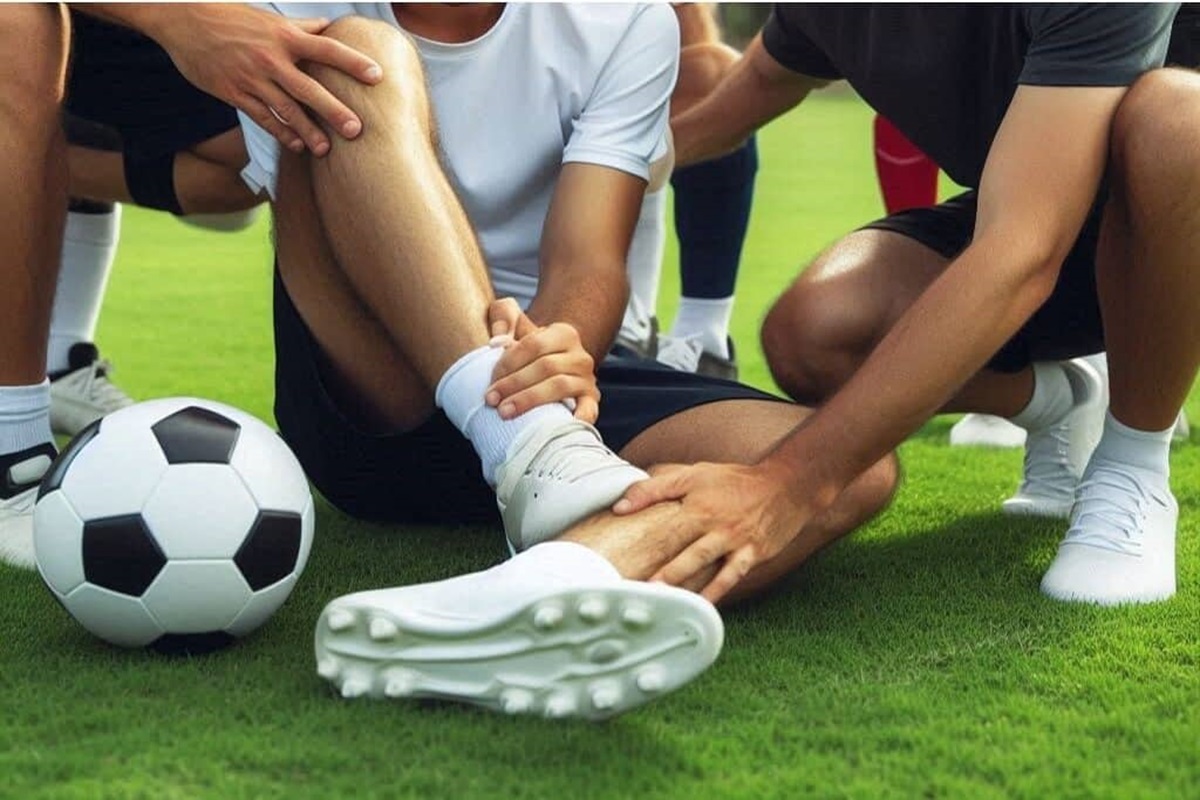Sports injury physical therapy is more than just a recovery tool—it’s an essential part of keeping athletes healthy, resilient, and performing at their best. Whether you’re a professional athlete, a fitness enthusiast, or someone just starting your fitness journey, injuries can derail your progress and impact your physical and mental well-being. Fortunately, with the right approach to sports injury rehabilitation, it’s possible to not only recover quickly but also prevent future setbacks. At OrMobility Physical Therapy & Performance, we offer comprehensive physical therapy services that blend science, personalized care, and cutting-edge techniques to help you thrive.
What is Sports Injury Physical Therapy?
Physical Therapy for Sports Injuries is a specialized form of rehabilitation focused on treating injuries related to physical activity and improving overall athletic performance. It addresses both the acute phase and long-term effects of injuries, using customized exercise programs and specialized treatment regimens tailored to the individual. It integrates techniques such as manual therapy, electrotherapy, hydrotherapy, and biomechanical analysis, combined with exercise therapy and mobility exercises. Physical therapists also work closely with sports medicine physicians, primary care providers, and orthopedic surgeons when needed, ensuring a multidisciplinary approach to optimal recovery.
The Role of Physical Therapy in Injury Prevention
Injury screening, movement analysis, and biomechanical analysis play crucial roles in identifying movement dysfunctions that could lead to future injuries. By assessing body mechanics, proper form and technique, and an athlete’s medical history, therapists can intervene before pain even starts.
Prevention includes:
- Strengthening exercises to build muscular support around joints.
- Balance training and proprioceptive training to improve body awareness.
- Warm-up techniques and cool-down techniques to prepare and recover the body.
- Preventive education that teaches athletes how to move safely during training and competition.
Key Techniques in Sports Injury Physical Therapy
A variety of hands-on and exercise-based methods are employed in physical therapy sports injury rehabilitation, each selected based on the injury type and the athlete’s sport. Techniques include:
- Manual therapy: To reduce pain, mobilize joints, and relax tight muscles.
- Stretching exercises: To enhance flexibility and reduce muscle tightness.
- Progressive resistance exercises and progressive strengthening exercises: To rebuild strength safely over time.
- Agility drills and coordination drills: To restore athletic performance and motor control.
- Dynamic movements: To simulate sport-specific motions in a controlled rehab setting.
- Functional and sports-specific training: To transition from basic rehab to advanced, sport-ready conditioning.
- Modalities: such as ultrasound, TENS, and electrotherapy for pain management and inflammation control.
Benefits of Sports Injury Physical Therapy
A well-designed sports injury and physical therapy plan goes far beyond treating pain—it’s a powerful strategy for long-term athletic success. Not only does it address the immediate effects of an injury, but it also improves overall movement efficiency, body mechanics, and performance. By incorporating advanced rehabilitation techniques, therapists help athletes recover faster while minimizing the risk of re-injury. With a focus on strength, flexibility, and sport-specific conditioning, physical therapy empowers individuals to return stronger, smarter, and more resilient than before. Ultimately, it’s about turning setbacks into setups for future success.
Preventing Long-Term Injuries Through Early Intervention
When injuries are ignored or treated improperly, they can progress into overuse injuries, joint damage, or chronic dysfunction. Early intervention during the acute care stage and rehabilitation phase is key to preventing these long-term consequences. With the help of injury screening, movement screen assessments, and a tailored approach, therapists can identify issues before they escalate. This allows for targeted corrections in biomechanics and body mechanics, supporting tissue repair and optimizing function. Proactive care doesn’t just stop injury—it builds a stronger foundation for continued athletic performance.
How Physical Therapy Speeds Up Rehabilitation
Sports injury rehabilitation is carefully structured in phases to guide the body through optimal healing. In the acute phase, techniques like R.I.C.E. (rest, ice, compression, elevation), pain management, and protected mobility help reduce inflammation and stabilize the injury. Interestingly, recent data shows that over 60% of patients view physical therapy (PT) as playing its most important role during post-injury care and the return-to-sport phase—highlighting just how critical expert guidance is during this period. The rehabilitation phase introduces mobility exercises, strength exercises, and conditioning exercises to restore function gradually and safely. For those requiring surgery, post-operative rehabilitation focuses on regaining range of motion, strength, and confidence using state-of-the-art equipment and comprehensive assessment.
Enhancing Performance and Mobility After Injury
The final stage of recovery isn’t just about healing—it’s about optimizing. Through sports-specific training, functional training, and running gait analysis, athletes develop better agility, coordination, and movement precision than before the injury. This performance-focused phase includes balance activities, visualization techniques, and sport-specific rehabilitation that mirror real-game demands. Therapists use customized treatment plans to align rehabilitation with each athlete’s performance goals, from regaining explosiveness to refining movement efficiency. With this approach, athletes not only recover—they excel.
How Sports Injury Rehabilitation Works

Sports injury rehabilitation is a personalized journey guided by evidence-based strategies and empathetic care. At OrMobility, we follow a structured and personalized plan to ensure the most effective outcomes. Each program begins with a thorough comprehensive assessment, including a review of medical history, a physical exam, and movement analysis to understand the root of the problem. From there, we develop customized treatment plans that evolve with the patient’s progress, integrating targeted exercises, manual therapy, and sports-specific training to support a full recovery.
Customized Treatment Plans for Your Specific Injury
Every athlete’s needs and recovery goals are unique, which is why a one-size-fits-all approach doesn’t work in sports injury rehabilitation. At OrMobility, we begin with a comprehensive assessment that includes a detailed physical exam, biomechanical analysis, and medical history review to guide the development of an individualized care plan. These customized treatment plans incorporate targeted exercises based on the nature of the injury and the demands of the athlete’s specific sport. As the program progresses, athletes engage in strengthening exercises, mobility exercises, and functional and sports-specific training to prepare for a safe return to performance. Mental health is also addressed through psychological support, helping athletes manage anxiety, build mental resilience, and overcome the fear of re-injury.
The Importance of Proper Recovery Techniques
Successful recovery isn’t just about doing the right exercises—it’s also about doing them at the right time and in the right way. Advancing too quickly or without proper guidance can lead to setbacks, chronic issues, or even re-injury. That’s why physical therapists focus on proper form and technique, ensuring that each movement contributes to healing rather than hindering it. Recovery also includes structured stretching exercises, balance exercises, and cool-down techniques to support muscular and joint health. Regular re-evaluations, the use of protective gear, and integration of conditioning exercises all help athletes build a foundation for sustained performance and long-term wellness.
Monitoring Progress: How We Track Your Healing Journey
Tracking progress is a vital part of sports injury physical therapy, ensuring that each stage of recovery is aligned with the athlete’s healing and performance goals. At OrMobility, we use advanced diagnostic tools, movement tracking, and direct feedback systems to measure outcomes and adjust care as needed. Patients work closely with their therapists through goal-setting and milestone evaluations, which keep them motivated and focused. If necessary, we collaborate with other healthcare providers, including primary care referrals and sports medicine physicians, to ensure comprehensive support. Regular check-ins and data-driven insights allow for ongoing adjustments to therapy, ensuring continued improvement and a safe return to activity.
The Different Types of Sports Injuries Treated with Physical Therapy
At OrMobility, we specialize in Sports Injuries Treatment, offering care for a broad spectrum of conditions ranging from sudden, acute incidents to long-standing overuse injuries. In fact, studies have shown that nearly one-third of all childhood injuries are linked to sports, with sprains and strains being the most frequent. Each injury is approached with a personalized treatment plan that reflects the unique needs and goals of the athlete. Through the use of manual therapy, movement analysis, and targeted exercise programs, we aim to alleviate pain and address underlying dysfunction. Our approach integrates sport-specific rehabilitation and progressive training techniques to ensure a strong, confident return to activity.
Common Sports Injuries and How They’re Addressed
Sports injuries can vary widely in severity, location, and impact on performance, but many share common patterns that can be effectively treated with physical therapy. Understanding how these injuries are addressed helps athletes recognize the importance of early intervention and specialized care. Here are some frequently treated injuries in sports injury physical therapy:
- ACL tears: Rehab involves proprioceptive training, progressive strengthening exercises, and sport-specific training to restore knee stability.
- Ankle sprains: Treated with balance training, manual therapy, and targeted exercises to improve mobility and prevent recurrence.
- Hamstring strains: Managed through stretching exercises, strength training, and dynamic movements.
- Rotator cuff tear and shoulder injuries: Focus on manual therapy, strengthening exercises, and coordination drills.
- Tennis elbow: Treated with electrotherapy, exercise therapy, and ergonomic education.
- Runner’s knee and shin splints: Managed with movement analysis, customized exercise programs, and conditioning exercises.
- Groin pulls, achilles tendinitis, concussions, stress fractures, and traumatic brain injuries: All treated with a multidisciplinary approach that may include occupational therapy, psychological support, and sport-specific rehabilitation.
From Acute to Chronic: A Holistic Approach to Treatment
At OrMobility, we take a holistic approach to treating the full spectrum of sports injuries, from initial sprains and strains to chronic joint degeneration. Our focus goes beyond symptom relief, addressing the root causes of dysfunction through comprehensive pain management strategies that include manual therapy and advanced modalities. We also correct movement imbalances using principles of biomechanics and targeted exercise therapy to restore optimal function. Additionally, we emphasize education—teaching athletes how to use protective gear, adopt proper movement habits, and incorporate sports-specific training to reduce the risk of future injuries and promote long-term health.
Why Choose OrMobility Physical Therapy & Performance for Sports Injury Rehabilitation?

At OrMobility Physical Therapy & Performance, we’re more than just a clinic—we’re your committed partner in recovery and peak performance. As an essential part of the sports healthcare team, physiotherapists play a crucial role in guiding athletes through recovery and performance enhancement. Our team brings extensive experience and specialized knowledge in sports injury rehabilitation, offering a blend of personalized care, advanced diagnostics, and cutting-edge treatment techniques. We understand that each athlete’s journey is unique, which is why our approach is always tailored to the individual’s goals, sport, and injury. When you choose OrMobility, you’re choosing a team that is fully invested in your long-term success.
Expertise in Restoring Mobility and Strength
Our highly skilled therapists are experts in restoring mobility, coordination, and functional strength following injury. Using advanced tools such as running gait analysis, manual therapy, and individualized care plans, we address not only the injury but also the underlying movement inefficiencies. Each treatment session is focused on improving performance through proper biomechanics and sport-specific movement patterns. We aim to help athletes move more efficiently, reduce compensations, and enhance overall physical performance. This comprehensive approach ensures a full recovery that prioritizes both health and athletic potential.
Non-Surgical Alternatives for Faster Recovery
Surgery is not always the first or best solution when dealing with sports injuries such as ACL tears or rotator cuff injuries. At OrMobility, we offer highly effective non-surgical alternatives that focus on restoring strength, flexibility, and function through customized rehabilitation. Our therapists utilize a blend of strength exercises, flexibility exercises, and functional training, all supported by state-of-the-art equipment and evidence-based practices. These conservative treatment methods are designed to promote healing while minimizing downtime. By avoiding unnecessary surgical procedures, we help athletes recover more quickly and return to their sport with greater resilience.
Avoiding Re-injury: The Role of Strengthening and Flexibility
Preventing future injuries is a key component of our rehabilitation programs at OrMobility. We place a strong emphasis on strengthening exercises to enhance joint stability and stretching exercises to maintain proper range of motion. Athletes are also educated on proper form and technique, which plays a critical role in minimizing stress on vulnerable areas. Regular movement screen tests are conducted to detect any potential imbalances or risks before they lead to re-injury. By reinforcing proper movement habits and physical preparedness, we help athletes stay active and injury-free in the long run.
Conclusion
Sports injury physical therapy is essential for athletes of all levels. It helps reduce pain, accelerate healing, restore function, and most importantly—prevent future injuries. Whether you’re battling a new injury or trying to improve your athletic performance, the experts at OrMobility Physical Therapy & Performance are here to guide you every step of the way. With our comprehensive physical therapy services, personalized programs, and evidence-based care, you’ll be back stronger, faster, and more confident than ever.
FAQs
What is the role of physical therapy in sports injury?
Physical therapy in sports injury focuses on pain relief, restoring movement, and preventing re-injury through exercise therapy, manual therapy, and sports-specific rehabilitation. It also plays a key role in addressing the psychological impacts of pain, like fear of re-injury and anxiety.
What is the most effective treatment for sports injuries?
The most effective treatment combines customized treatment plans, targeted exercises, and a blend of manual therapy, electrotherapy, and functional training. It depends on the type and severity of the injury, as well as the individual’s goals and sport.
What therapy is needed after a sports injury?
After a sports injury, physical therapy sports injury rehabilitation typically includes pain management, strength training, mobility exercises, and sports-specific training. Emotional and mental support, including positive reinforcement, goal-setting, and stress management, also plays a vital role in a full recovery.


